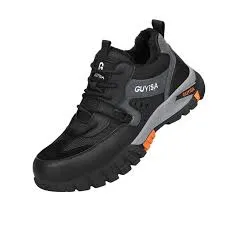Innovative Safety Helmet Designed for Cheerleading to Enhance Protection and Performance for Athletes
The Importance of Cheerleading Safety Helmets
Cheerleading is an invigorating sport that combines physical agility, teamwork, and performance artistry. However, as exhilarating as it can be, cheerleading also poses inherent risks, particularly for those involved in stunting and tumbling. Injuries can occur, and that's where the importance of safety equipment, particularly cheerleading safety helmets, comes into play.
Understanding the Risks
Cheerleading involves complex maneuvers, including pyramids, tosses, and flips. These high-energy stunts demand precision and synchronization among team members. Despite rigorous training and strict safety protocols, accidents can happen, leading to severe injuries such as concussions, fractures, or sprains. According to the National Center for Catastrophic Sport Injury Research, cheerleading has seen an alarming increase in serious injuries over the years. This underscores an urgent need for protective gear designed specifically for cheerleaders.
The Role of Safety Helmets
Safety helmets for cheerleaders serve as a critical layer of protection during practice and performances. These helmets are specifically designed to absorb impact and reduce the risk of head injuries. Unlike traditional sports helmets, which may be bulky and heavy, cheerleading helmets are lightweight and streamlined. This design ensures that they do not hinder the cheerleader's movement or performance while still providing vital protection.
Modern cheerleading safety helmets are often made with advanced materials that not only offer superior shock absorption but are also breathable and comfortable
. They can often be worn discreetly under cheerleading bows and accessories, allowing athletes to maintain their aesthetic without sacrificing safety.Features to Look For
cheerleading safety helmet product

When selecting a safety helmet for cheerleading, several features should be considered to ensure optimal protection. First and foremost, the helmet should meet relevant safety standards set by organizations like the American Society for Testing and Materials (ASTM) or the National Operating Committee on Standards for Athletic Equipment (NOCSAE). These certifications ensure that the helmet has been rigorously tested for impact resistance.
Additionally, the helmet should include adjustable straps for a secure fit, as a helmet that moves during stunts can be ineffective and even dangerous. Ventilation is also crucial; a well-ventilated helmet allows for airflow, keeping the athlete cool during intense routines.
Promoting a Culture of Safety
Introducing cheerleading safety helmets is more than just about the equipment; it's about promoting a culture of safety within cheerleading programs. Coaches, team leaders, and organizations should prioritize safety by educating cheerleaders on the importance of wearing helmets. This education can extend to parents and guardians, who play a vital role in supporting safe practices.
Teams can create initiatives where helmet usage is emphasized during stunts and practice sessions. Implementing a “safety first” policy not only protects the athletes but also fosters a team environment where everyone feels valued and secure.
Conclusion
As cheerleading continues to evolve with increasingly complex routines and stunts, the necessity for safety equipment like helmets becomes ever more apparent. By investing in high-quality cheerleading safety helmets, teams can significantly reduce the risk of injuries and ensure that their athletes can perform with confidence and enthusiasm. Ultimately, protecting the well-being of cheerleaders should always be a top priority, allowing them to enjoy the sport they love while mitigating unnecessary risks.
-
Fire Safety Helmet: Ultimate Protection for Firefighters
NewsAug.15,2025
-
Women's Safety Clothing Canada | Durable & Certified PPE
NewsAug.14,2025
-
Women's Safety Clothing Canada: Shop Durable PPE
NewsAug.13,2025
-
Quality Safety Clothing & Reflective Workwear | Buy Online
NewsAug.12,2025
-
Safety Helmet with Visor for Ultimate Work Protection
NewsAug.11,2025
-
Durable Waterproof Safety Clothing | Buy & Customize
NewsAug.10,2025
